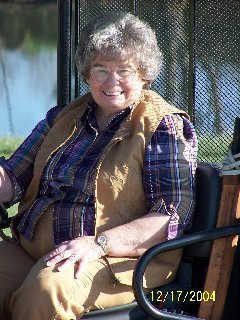Genealogists of Southern Illinois spent a beautiful spring day June 9th remembering some of the horrors of a brutal cold winter in this area over 166 years ago. At that time, approximately 11,000 Cherokee trekked from the Ohio River to the Mississippi River on their way to Indian Territory.
The Board of the Illinois Chapter of the Trail of Tears presented a morning-long symposium at the Spring Conference of the Genealogical Society of Southern Illinois at John A. Logan College in Carterville. Conference Chair Mike Brush indicated that the large crowd in attendance was evidence of the interest that has developed in the area for information on the Trail of Tears.
Despite the absence of two panelists due to illness, not a minute was wasted to convey as much information as possible about the tragic story of the forced removal of the Five Civilized Tribes from their homeland. The audience was encouraged to join the Trail of Tears Association and help the Illinois Chapter to discover the exact route of the Trail, collect the stories of the Cherokee who were left behind in this state, and memorialize both the ones who died and the ones who endured the cruel march.
As moderator. after introducing the TOTA Board, I gave a brief background of the attitudes and events leading up to the Indian Removal Act in 1830 and the United States Senate’s ratifying by one vote in 1836 the fraudulent Treaty of New Echota.
Illinois chapter president Sandy Boaz, a charter member of both the national TOTA in 1993 and the Illinois Chapter in 2003, explained the role of the TOTA in helping the National Park Service in the creation, development, and interpretation of the Trail of Tears National Historic Trail established by Congress in 1987.
After a brief break for the audience, Harvey Henson of the Southern Illinois University at Carbondale geology department, gave a power point presentation telling about the ongoing remote sensing project at Camp Ground Cumberland Presbyterian Church Cemetery in Union County. Oral tradition has passed down that a large area of the cemetery was where Mr. George Hileman allowed the Cherokees camping there to bury their dead that dreadful winter. The SIUC work is confirming the exact location of those graves.
Next Joe Crabb told of the Cherokees coming across the Ohio River from Kentucky into Golconda and had the crowd laughing at the evaluation of the Golconda residents found in Rev. Daniel S. Butrick’s journal. Joe gave his educated guess as to where the Trail went through Pope County explaining that he was convinced that some used the roadway through his farm.
Gary Hacker took over to share what is known about the location of the Trail through Johnson County. He talked about sites known as Gillespie, McCorkle Creek, Vienna, Dutchman Creek, West Vienna, Hezekiah West, Cypress, Ferne Clyffe, and Cache Bottoms, He explained how the Illinois Chapter had secured legislation in November to make Route 146 a designated historic trail for the state and his efforts now to obtain appropriate signage. With help from Juanita Whiteside, the Illinois Chapter has succeeded in getting Bridges Tavern (still existing inside a barn on north side of 146) put on the Landmarks Preservation Council of Illinois’ current list of endangered sites.
Sandy Boaz discussed the Trail beginning at the Union County line. Her ancestor George Hileman had allowed the Indians to camp on his farm and chop the woods there for their firewood. He had previously buried two of his small children in the field where they were camping, and they were allowed to bury their dead there too. In was in the 1850s that Mr. Hileman donated land for the church and its cemetery. She talked about the Cherokee going through Jonesboro and onto Dutch Creek where the floes preventing crossing on the Mississippi River caused groups to stop. There were probably 8000 backed up for over a month between the two rivers.
While eating their box lunches, many chose to listen to Marion Mitchell’s power point presentation on the Indians in Illinois during the time when the British encouraged them to make war on pioneer settlers.
The afternoon ended with the powerful historically accurate dramatic portrayal by Tony Girard enacting the service of a common soldier during Cherokee round-up in Georgia. After the fictional soldier’s enlistment was up, he then signed on as a teamster with a contractor traveling with the Cherokee. By the time he reached the Mississippi River, he could take no more of the death and disease he had to observe.
Several audience members stayed on to meet with former GSSI president Phillip Stucker, who was visiting from Texas. He gave another power point rendition of the Trail of Tears Association and answered genealogical questions in the room where there was a display of notebooks and materials on the Trail.
Yorktown Virginia
-
On Sunday, after our museum day, Wesley and I drove to Yorktown Va. I am
so glad we ventured out looking for a waterfront on this trip. I had to
mercha...
5 years ago












No comments:
Post a Comment